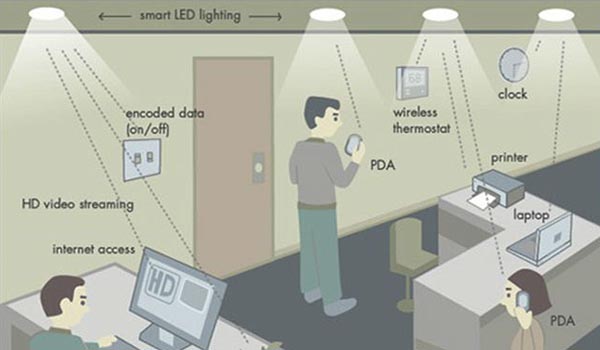
08 Dec LiFi is 100 Times Faster Than WiFi
Did you ever imagine a light bulb could be used to connect to the internet?
LiFi is an emerging technology that can do just that and several companies are now developing technologies that use visible light to transfer data.
Initial laboratory tests have shown speeds up to 224Gbps and this year we have seen companies such as Velmenni developing LED bulbs to transmit data.
Professor Harald Haas, from the University of Edinburgh is known as the founder of LiFi as explains how the current infrastructure can be utilised to support LiFi.
All we need to do is fit a small microchip to every potential illumination device and this would then combine two basic functionalities: illumination and wireless data transmission. In the future we will not only have 14 billion light bulbs, we may have 14 billion LiFis deployed worldwide for a cleaner, greener and even brighter future. Harald Haas, founder of LiFi.
Advantages of Using LiFi
Using LiFi has the following advantages:
Increased Speed
Tests have delivered speeds of up to 224Gbps. Multiple devices can connect to a single light source and data streams are less susceptible to interference.
Increased Security
LiFi cannot travel through walls so is less at risk of being intercepted. If light is confined to a room then data transmissions are not able to escape.
Integration
LiFi can be built into light bulbs allowing data transmission to be integrated into existing lighting.
While LiFi is only just rolling out to commercial applications it could be some time before we see it replacing exisiting technologies. Due to its range limitations LiFi would best work in conjunction with WiFi and as a method of close distance, high speed wireless data transfer.
If you would like to keep up to date with mobility news please subscribe to our newsletter.

